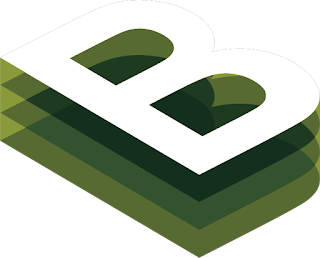Hi everyone, today I would like to tell you the best tools every graphic designer should have in 2017.
If you’re beginner in designing and want to get off to the best
start, here are the tools you need to use.
1.You
should choose right software for you (and your budget)
Adobe’s Creative Cloud the name
itself is a creative and the products are outstanding for professional
designers, the range and depth in its suite of tools unrivalled by any other
company. But it comes at a cost. As an individual designer, prices for the
entire suite start at rupees 3,382 per month if paid annually or nearly rupees 6,720 per month if
paid on a monthly basis. It’s a lot of cash. Still, you get Photoshop,
Illustrator, InDesign, After Effects and loads more. If you’re looking to be
truly multi-disciplined and are confident of the work rolling in then it’s the
way to go.
If your work revolves purely around vector
design (illustration, logos and so on) and photo-editing/manipulation, there’s
another option you could plump for. Affinity Designer and Affinity Photo are both
excellent tools from Serif – believe us, they even top Photoshop and
Illustrator in some areas – and they only cost around ₹4,000 each. No monthly
subscription and free updates. What’s more, superb file compatibility means you
can work with others using Photoshop or Illustrator.
2.
Wacom tablet/interactive pen display
Using a mouse is just not natural – when you
learn to write and draw at school you don’t just move a pencil around with your
wrist, do you? A Wacom tablet or more expensive Interactive Pen Display is
therefore critical for design and illustration work.
You’ll get pressure-sensitivity in Photoshop, Illustrator
and the like, but more importantly you’ll be creating in a more intuitive,
natural way. Plus there’s health benefits – using astylus rather than a mouse
is proven to reduce RSI.
3. iMac/MacBook
or Surface Studio/Book
Of course you’ll need a decent computer that’s capable of running your software at the same pace as your brain. Whilst Macs have traditionally been the choice of graphic designers, the landscape is changing at a pace.
Sure, the new MacBook Pro Touch Bar with a 4K screen from say, LG, is a fantastic set up, but put it against Microsoft’s revolutionary Surface Studio and you have a few questions to ask yourself. Why? Because the Surface Studio looks to be a true artists’ tool – it can be used in regular desktop mode or laid flat so you can design directly on the touchscreen. It’s not available quite yet, but when it is the 28-inch touchscreen desktop could be well worth a look – even if it’s likely to cost over rupees 2,10,026.
4. Color, products and guides for accurate color
If you’re doing a lot of print work, you’re likely to be asked to use (or want to use) a fifth colour at some point. The only way you can really get an accurate idea of how your special colour will print is to invest in a Pantone Reference Library – a series of swatch books and folders containing chips that show you a printed representation of each colour. So not only will it show you how the colour you select in say, Illustrator or InDesign, will print, but it will also enable you to tear a swatch out and pin it to your proof for the printers – so everyone’s clear on what colour you need.
There are also swatch books that enable you to match a fifth colour to a CMYK value – perfect for situations where your client’s budget doesn’t stretch to a fifth colour for a certain job.
5. Top-end smartphone
OK, so you may not need a top-end smartphone for your daily design work, but when dealing with clients, replying to emails and viewing images and soft proofs on the go, you want a smartphone that’s easy to use, sports a vibrant, large screen and has the power to do everything you need it to do at once.
Of course, the iPhone has long been the choice for designers – mainly thanks to its integration with Mac OS. And whilst the 7 Plus is a cracking phone, there are other options. The Google Pixel XL is lightning fast and offers a completely native Android experience – with no ugly add-ons or skin. And Samsung’s S7 Edge is a beautiful piece of design (soon to be superseded by the S8, so look out for that).
All of these are stellar devices, and you can even run cut-down versions of Photoshop and Lightroom on them. Oh, and of course all have great cameras for shooting on-the-fly reference material.
6. Color correction Monitor(Calibrated monitor)
Following on from the Pantone Refence Library, it’s vital that your colour workflow is as accurate as possible. The last thing you want is for your hard work to look completely different at output than it did during the design process. Calibrating your monitor isn’t hard, but it does require a specialist tool.
One of the best is the Datacolor Spyder 5 Pro. This tool hangs on your monitor and creates a unique colour profile (or the profile your printers are using) adjusting the monitor’s brightness level based on your room lighting. Calibrating your monitor is the only way to guarantee complete accuracy when moving from print to screen – so you should invest as soon as possible.








No comments:
Post a Comment